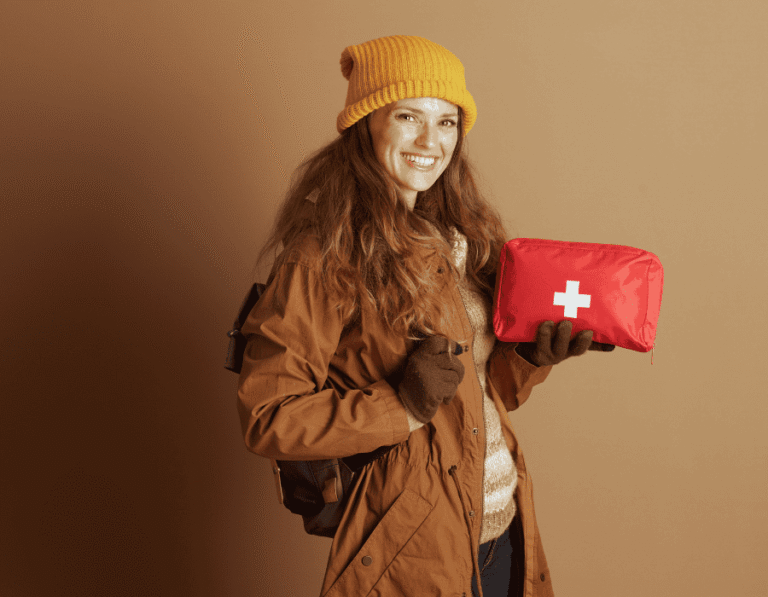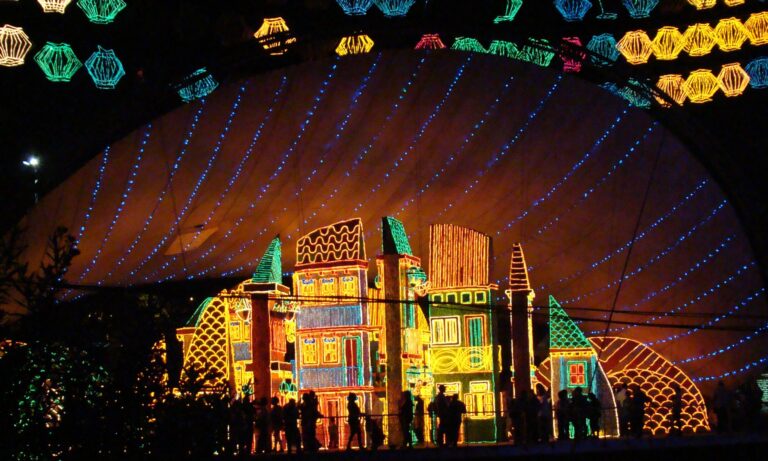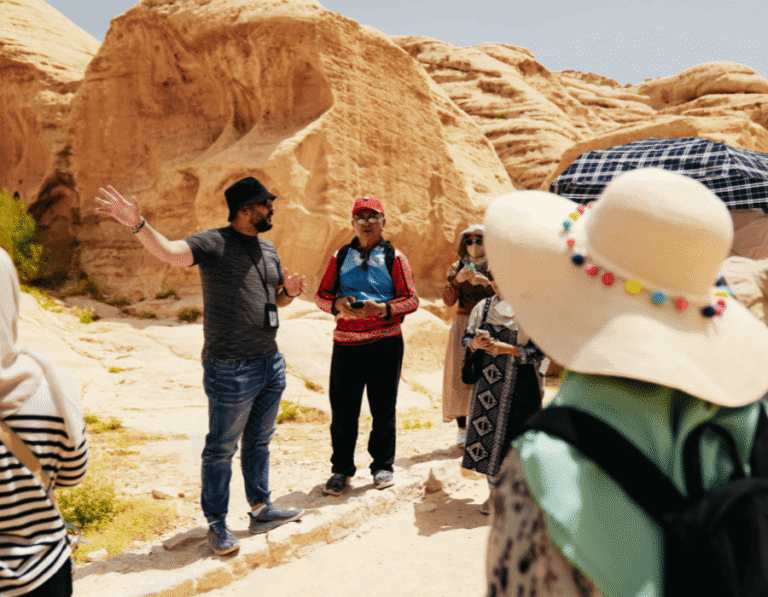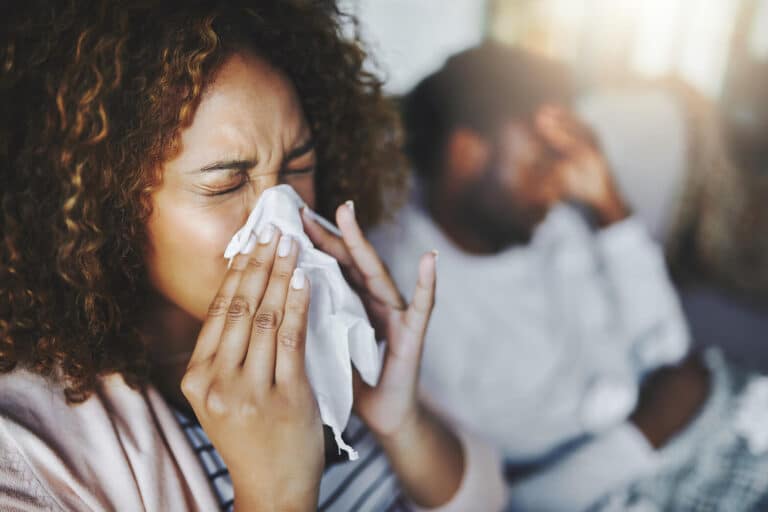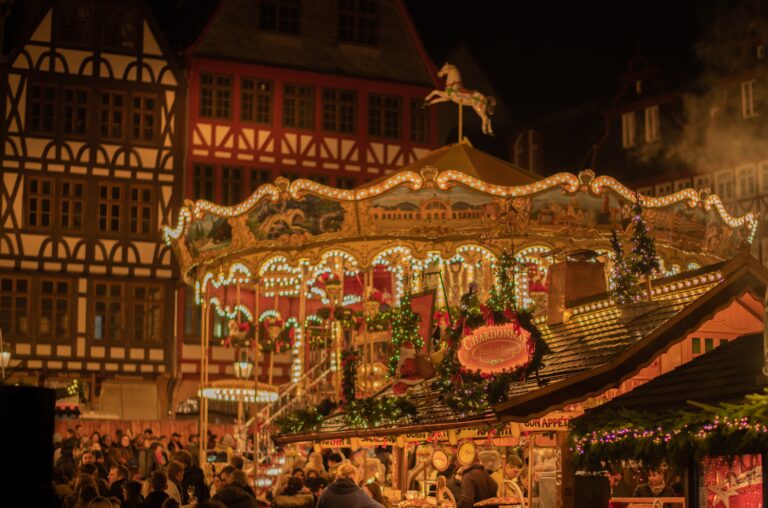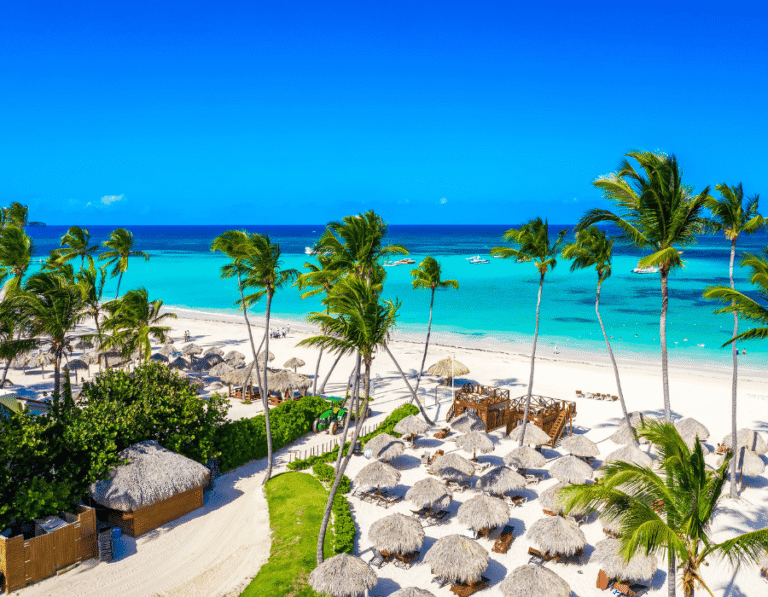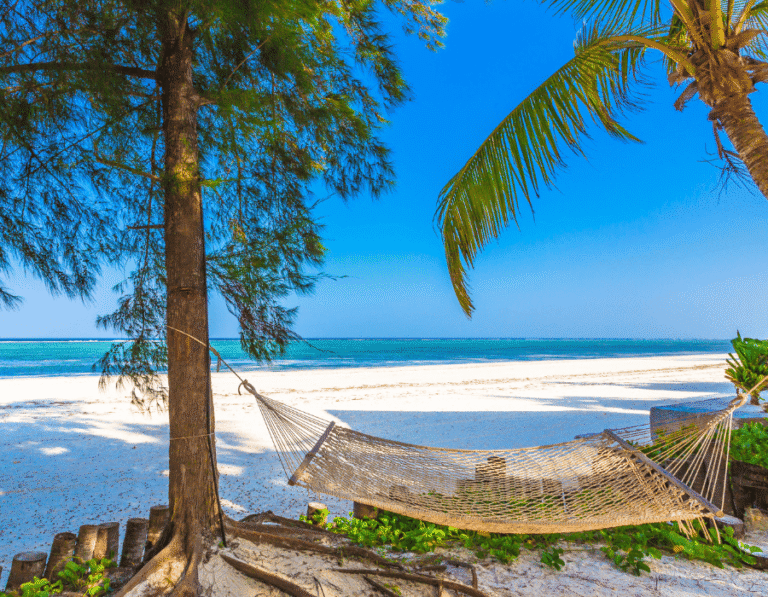Florence has long been regarded as Italy’s cultural capital, and Tuscany’s most famous city. Without a doubt, Florence is one of the most cultural and historical cities in the world, filled with amazing architecture, and a vast selection of museums, galleries, boutiques, and ancient sites.
Is traveling to Florence, Italy on your bucket list? Here’s our guide on what to do in Florence when you only have 2 or 3 days.
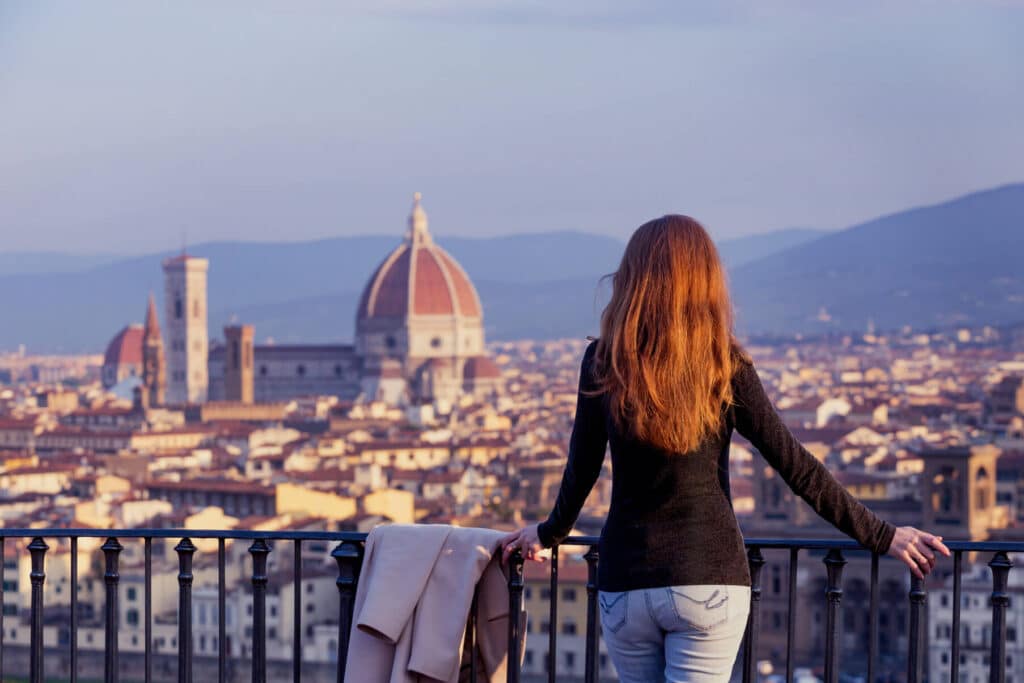
Why You Should Visit Florence
Florence, the birthplace of the Renaissance, is a living museum brimming with art, history, and charm. From Michelangelo’s David to the majestic Duomo, every corner of the city feels like you’re stepping into a masterpiece.
Whether you’re an art lover, a history buff, or a foodie, Florence offers a unique blend of culture, beauty, and that beloved Italian warmth that makes it a must-visit destination.

Packing For Your Trip
Florence is a city best explored on foot, so packing wisely will definitely make your trip smoother. Here’s what you’ll need:
- Comfortable walking shoes: Florence’s charming cobblestone streets can be tough on your feet, so bring something sturdy.
- Seasonal clothing: Summer is hot, so light fabrics like cotton or linen are ideal. In winter, layer up with jackets and sweaters for the chillier temperatures.
- Portable charger and universal adapter: Italy uses European plugs (Type C, F, or L), and you’ll want to keep your devices charged.
- Reusable water bottle: Florence has plenty of public fountains with clean, drinkable water, perfect for refilling on the go.
- Small backpack or tote bag: Handy for carrying your essentials as you explore the city, and great for packing any goodies from local markets.
- Bonus: Don’t forget to leave some extra space in your luggage for souvenirs like local wines, ceramics, or leather goods from Florence’s artisan shops!
Flying To Florence, Italy
If you’re flying to Florence, Italy there are a few things you need to know.
First of all, Florence Italy Airport (FLR), called Amerigo Vespucci, is a small airport.
It’s located on the northwest outskirts of Florence; about 4 km from the city center. The airport is connected to some of Europe’s major airports including Amsterdam, Barcelona, Brussels, Bucharest, Frankfurt, Geneva, London Gatwick, Madrid, Munich, Paris Charles de Gaulle, and Vienna.
There are also flights to and from these Italian cities: Bologna, Cagliari, Catania, Milan, Malpensa, Olbia, Palermo, Rome Fiumicino, Turin, and Verona.
You can either take a taxi to and from the airport, or you can take the Busitalia SITA Nord “Vola in Bus” bus shuttle which operates between the airport and the central railway station of Santa Maria Novella.
For more info, visit: www.aeroporto.firenze.it/
You may even want to consider flying into Pisa and then making your way to Florence though.
Tuscany’s second airport is far from the city center, but fares at this airport are much more cost-effective. Once there, your options for budget-friendly transport to Florence are bus or train.
The bus will cost you around € 17, while the train will cost you around € 5, but you’ll have to change trains. You also don’t need to book tickets for these ahead of time, just make sure you carry cash.
Also, don’t forget to pack these essential documents prior to your trip.
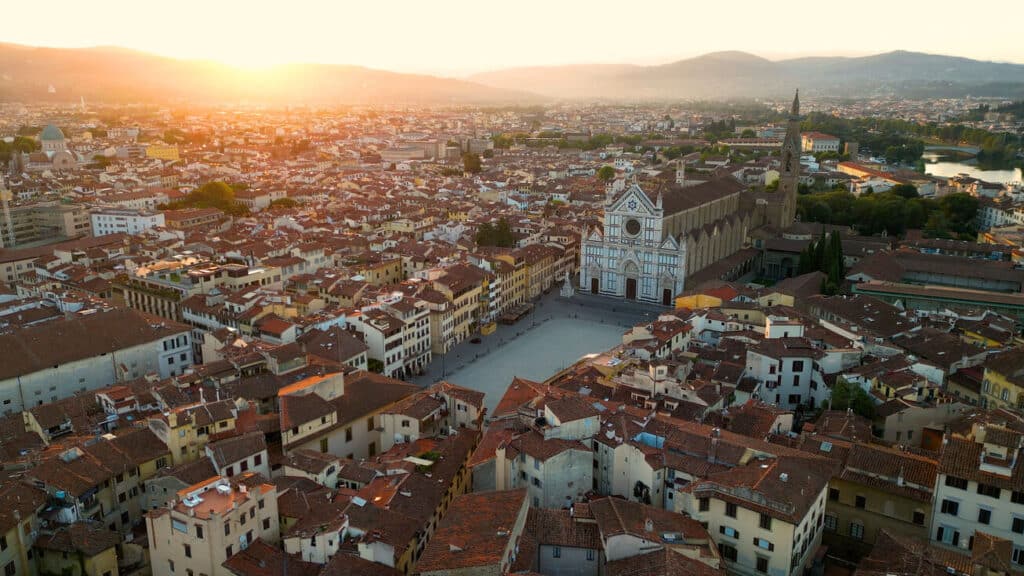
What To Eat In Florence
Florence is a foodie’s dream (although most of Italy is), offering both traditional and innovative Tuscan dishes. Here are some local favorites you must try:
- Bistecca alla Fiorentina: The star of Florentine cuisine, this thick-cut T-bone steak is cooked rare and best enjoyed with a glass of local wine.
- Lampredotto: A street food classic made from slow-cooked tripe, usually served in a sandwich with green sauce.
- Pappa al Pomodoro: A rustic bread and tomato soup, a comforting and flavorful dish especially popular in colder months.
- Ribollita: A hearty vegetable and bread soup, packed with kale, beans, and seasonal veggies. It’s the ultimate comfort food, especially in winter.
- Cantucci with Vin Santo: Almond biscotti paired with a sweet dessert wine, Vin Santo, perfect for a light, sweet ending to your meal.
- Pappardelle al Cinghiale: Wide ribbon pasta served with a rich wild boar sauce, a Tuscan specialty that’s savory and satisfying.
Additionally, no trip to Florence is complete without trying some gelato from a traditional gelateria.
You’ll find flavors ranging from classics like pistachio and chocolate to innovative seasonal creations.
Tip: Be sure to avoid brightly colored gelato – as the best quality uses natural ingredients, making it paler in color!
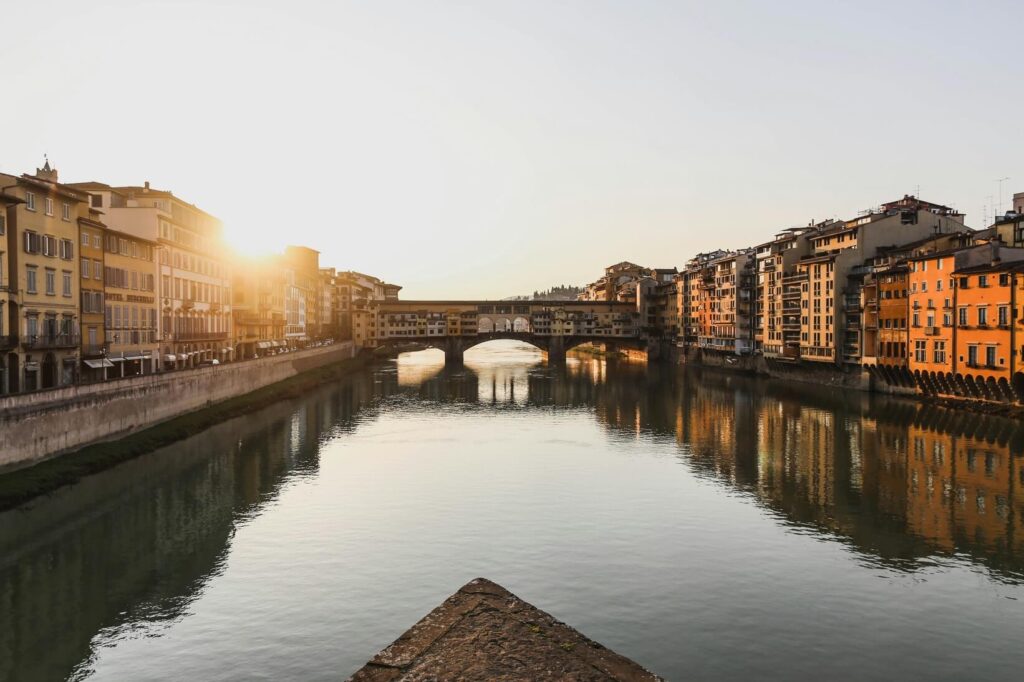
Where To Stay In Florence
Florence offers a variety of neighborhoods, each with its own unique character, perfect for different types of travelers:
- Centro Storico: If you want to be in the heart of the action, stay here. It’s close to the Duomo, Uffizi, and Ponte Vecchio, perfect for first-time visitors. Everything is walkable, and you’re surrounded by history.
- Oltrarno: For a more local, artistic vibe, this area across the Arno River is charming with fewer tourists. Here you’ll find artisan shops, quiet streets, and the beautiful Pitti Palace and Boboli Gardens nearby.
- Santa Maria Novella: Convenient for travelers who need easy access to Florence’s main train station. It’s a little quieter than the city center but still within walking distance of major sights.
- San Lorenzo: Ideal for food lovers and market-goers. This lively area is close to the famous Mercato Centrale, where you can sample delicious local food and fresh produce. You’re also near San Lorenzo Basilica, with Medici Chapels to explore.
- San Niccolò: A picturesque, lesser-known area at the foot of Piazzale Michelangelo, perfect for those who enjoy walking and want a quieter, local experience with great views of Florence.
Getting Around Florence
Florence is super walkable, but there are some other transportation options to help you get around:
- Buses and Trams: Florence’s bus system covers the entire city, and it’s useful for reaching places a bit farther from the center. Tickets can be purchased at newsstands or via mobile apps.
- Taxis: Taxis are available, but they can be expensive for short distances. It’s best to call ahead or find one at designated taxi stands rather than hailing one on the street.
- Bicycles and Scooters: Rentals are available for a fun and eco-friendly way to explore Florence. Just be cautious around traffic, especially in busier areas.
- Trains: Florence’s Santa Maria Novella station connects you to other cities and towns in Tuscany, perfect for day trips to places like Pisa or Siena.
Public transport and taxis are a great idea if you’re staying further from the city center, or if you want to explore surrounding areas.
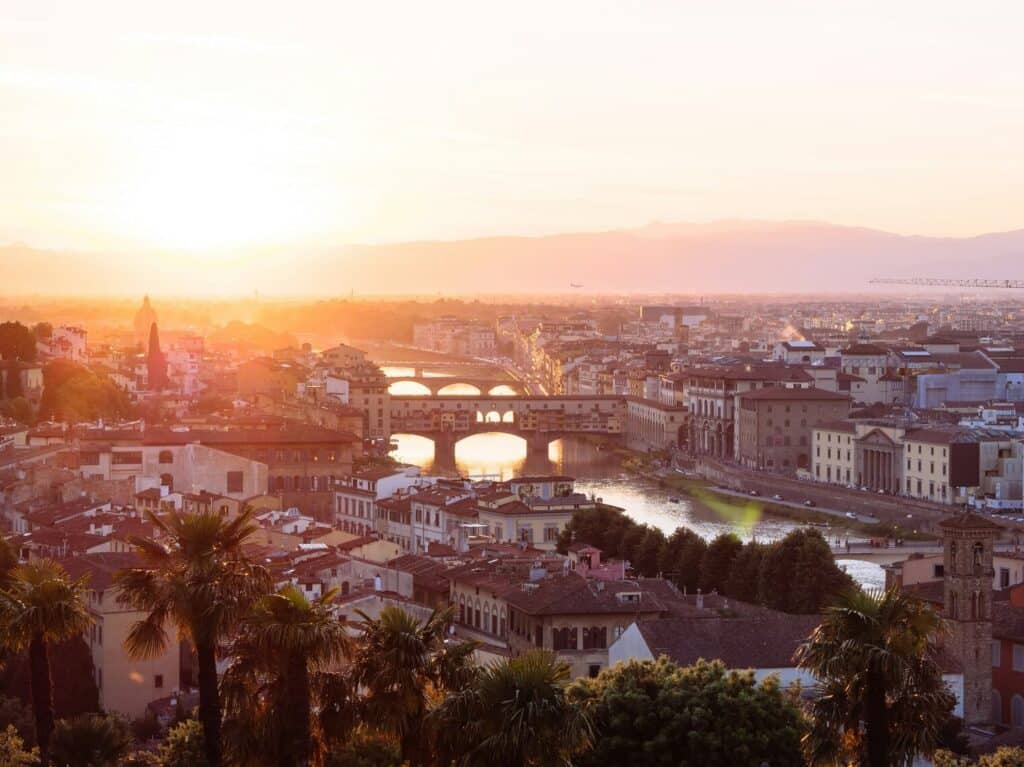
Suggested Itinerary
With everything above, you’re about ready to jet off! But before you go, here’s a sample itinerary. It’ll help you make sure you hit the top spots and make the most of your trip.
Day 1: Florence’s History
- Morning: Start your day at Piazza del Duomo. Climb the 463 steps to the top of Brunelleschi’s Dome for breathtaking views of Florence. Don’t forget to explore the Basilica di Santa Maria del Fiore and the intricate Baptistery.
- Afternoon: Head to the Uffizi Gallery. Consider pre-booking your tickets to skip the lines. Spend a few hours admiring masterpieces by Botticelli, Michelangelo, and Leonardo da Vinci.
- Evening: Walk across the Ponte Vecchio, known for its jewelry shops. As the sun sets, enjoy a leisurely dinner at a trattoria nearby, savoring traditional Tuscan dishes like pici cacio e pepe.
Day 2: Art & Local Life
- Morning: Start at Santa Maria Novella, where you can explore the beautiful frescoes and the stunning facade. Visit the Museo di Santa Maria Novella for more art.
- Afternoon: Visit the Accademia Gallery to see Michelangelo’s iconic David and other notable sculptures. Afterward, wander around the San Lorenzo Market for local crafts and souvenirs.
- Evening: Make your way to Piazzale Michelangelo for stunning sunset views over the city. Bring a light snack or some gelato to enjoy as you take in the scenery. For dinner, consider a restaurant in the Oltrarno area, known for its cozy atmosphere and authentic cuisine.
Day 3: Hidden Gems & Gardens
- Morning: Start your day in Oltrarno at the Pitti Palace, where you can explore its impressive art collections. Don’t miss the Palatine Gallery and the Royal Apartments.
- Afternoon: After lunch, take a peaceful stroll through the Boboli Gardens. These expansive gardens are perfect for relaxing and offer beautiful sculptures and fountains.
- Evening: Conclude your trip with a visit to San Miniato al Monte. It’s a bit of a hike, but the panoramic view of Florence at sunset is worth it. For your final dinner, indulge in a traditional meal at a local osteria, perhaps trying pappardelle al cinghiale (pasta with wild boar) to savor the flavors of Tuscany one last time.
Before You Go – Download The Air Doctor App!
Now the only thing left to do is make sure you don’t get sick on your trip!
With the Air Doctor app in your pocket, you can access medical care and receive expert medical guidance wherever you are in the world!
Air Doctor’s easy-to-use app gives you:
- A global network of over 20,000 multi-lingual doctors and specialists
- Choice of clinic, at-home (hotel), and video consultations
- Active in 78 countries
- 24/7 multi-lingual support
- Transparent pricing, and reviews
- Most common medical specialties
- So much more
Safe travels!




